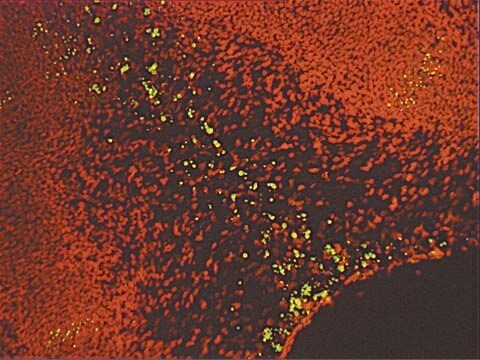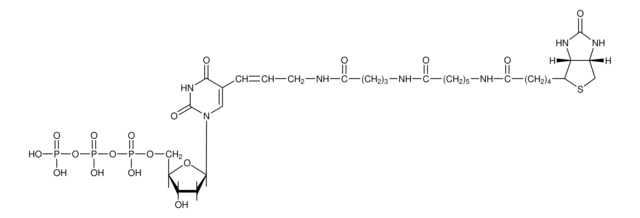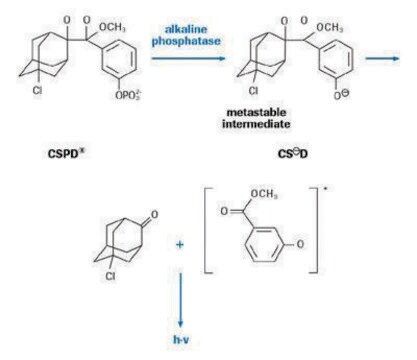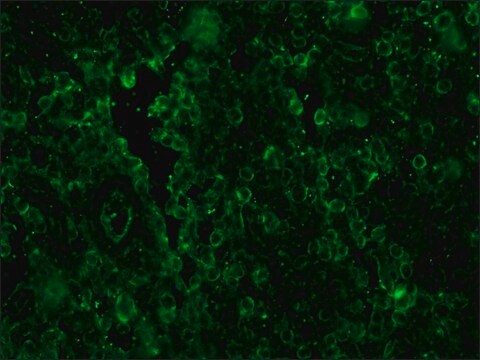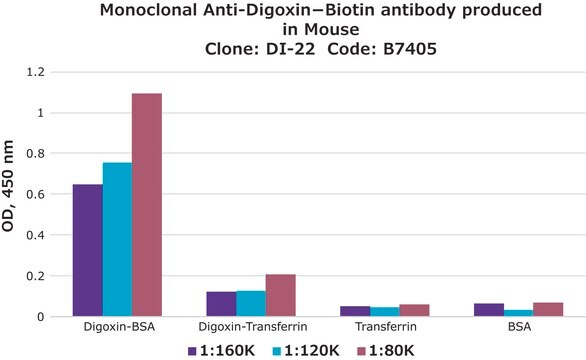11207741910
Roche
Anti-Digoxigenin-Fluorescein, Fab fragments
from sheep
Sinónimos:
anti-digoxigenin, digoxigenin
About This Item
Productos recomendados
biological source
sheep
Quality Level
conjugate
fluorescein conjugate
antibody form
purified immunoglobulin
antibody product type
primary antibodies
clone
polyclonal
form
lyophilized
packaging
pkg of 200 μg
manufacturer/tradename
Roche
isotype
IgG
storage temp.
2-8°C
General description
Specificity
Application
- Digoxigenin-labeled sugars in glycoconjugate research
- Fluorescent in situ hybridization (FISH)
- Immunohistocytochemistry
- In situ hybridization
Preparation Note
- Working concentration: Working concentration of conjugate depends on application and substrate. The following concentrations should be taken as a guideline:Detection of digoxigenin-labeled sugars in glycoproteins: 50 to 20μg/ml
- Fluorescent in situ hybridization (FISH): 1 to 20μg/ml
- Immunohistocytochemistry: 20 to 50μg/ml
- In situ hybridization: 20 to 50μg/ml
The anti-DIG anitbody is highly specific and sensitive. Therefore, for FISH, a concentration of 1μg/ml is sufficient, and only in case of critical probes, this concentration may be raised to <10μg/ml (with a distinct background to be expected).
Working solution: Reconstitution
Add 1 ml double-distilled water to a final concentration of 200μg/ml.
Blocking:
PBS, 0.5% bovine serum albumin (w/v), pH 7.4.
1% Blocking reagent (w/v), 1 to 5% heat inactivated fetal calf serum (v/v) or sheep normal serum can be used for reduction of unspecific binding. Furthermore, pH can be increased up to pH 8.5 to 9.0.
Storage conditions (working solution): Always prepare fresh!
Reconstitution
Other Notes
¿No encuentra el producto adecuado?
Pruebe nuestro Herramienta de selección de productos.
signalword
Warning
hcodes
Hazard Classifications
Aquatic Chronic 3 - Skin Sens. 1
Storage Class
13 - Non Combustible Solids
wgk_germany
WGK 2
flash_point_f
does not flash
flash_point_c
does not flash
Elija entre una de las versiones más recientes:
¿Ya tiene este producto?
Encuentre la documentación para los productos que ha comprado recientemente en la Biblioteca de documentos.
Los clientes también vieron
Artículos
Digoxigenin (DIG) labeling methods and kits for DNA and RNA DIG probes, random primed DNA labeling, nick translation labeling, 5’ and 3’ oligonucleotide end-labeling.
Nuestro equipo de científicos tiene experiencia en todas las áreas de investigación: Ciencias de la vida, Ciencia de los materiales, Síntesis química, Cromatografía, Analítica y muchas otras.
Póngase en contacto con el Servicio técnico


